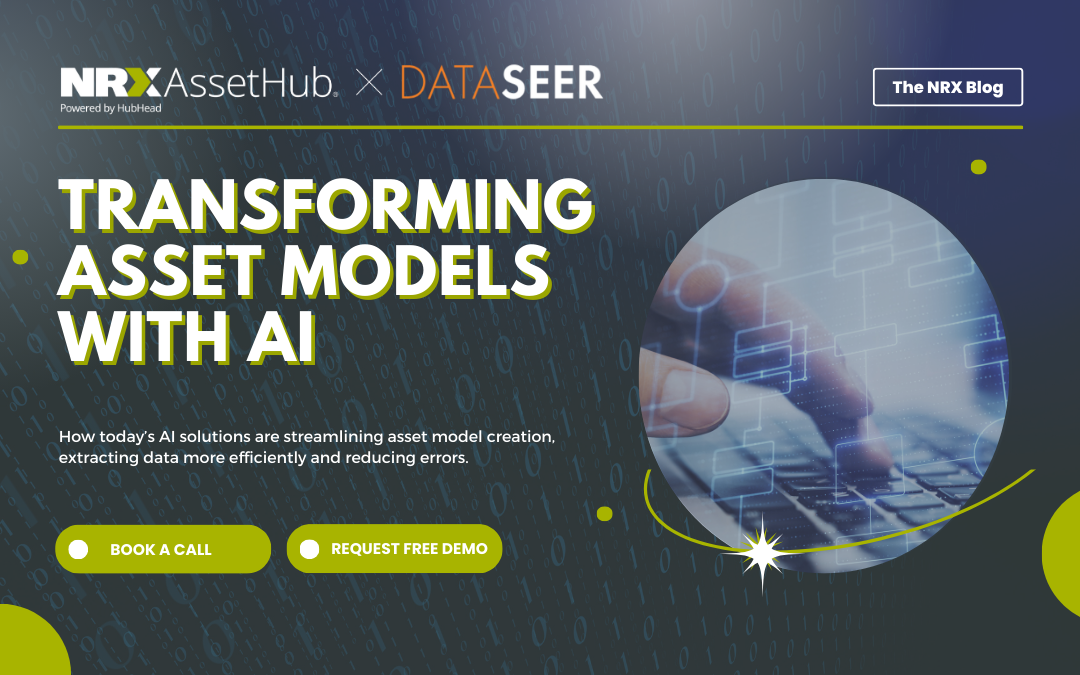In the world of industrial asset management, accurate asset models are the foundation for efficient operations and maintenance. These models, which organize data for equipment, components, and maintenance tasks, are essential for Enterprise Asset Management (EAM) and Computerized Maintenance Management Systems (CMMS) like SAP Plant Maintenance or IBM Maximo. Historically, creating these asset models has been a slow, manual process, fraught with inefficiencies and human error. Fortunately, today’s AI solutions are radically changing how asset models are built, offering companies faster, more accurate, and less labor-intensive solutions.
The Traditional Challenges of Asset Model Creation
Before AI, asset model creation was a manual and often painstaking process. Technicians and data teams would pore over technical drawings, equipment manuals, and legacy documents—many of which were non-digital—to extract the necessary information. This meant manually identifying and entering details such as asset tags, equipment hierarchies, preventive maintenance schedules, and spare parts lists into EAM or CMMS systems.
This process was error-prone, time-consuming, and inefficient, especially when dealing with large, complex facilities that might involve thousands of pieces of equipment. Human error, rework, and incomplete data plagued many organizations, often leading to downtime, increased maintenance costs, and reduced reliability.

Enter AI: Automating the Complexities
Artificial intelligence– combined with computer vision and machine learning– is now revolutionizing the creation of asset models. Rather than relying on manual processes, AI systems can automatically extract critical asset information from technical documents, scanned PDFs, and equipment drawings, transforming how businesses approach asset data management.
Here’s how AI is making a difference:

- Automated Data Extraction: AI-powered tools leverage computer vision and machine learning models to detect, extract, and digitize information from technical diagrams and datasheets. Whether working with Piping and Instrumentation Diagrams (P&IDs), isometric drawings, or equipment lists, AI can quickly identify relevant symbols, text, and data fields. The information is then organized into structured formats, such as CSV files, which can be easily ingested into CMMS or EAM systems.
- Increased Accuracy and Consistency: One of the significant advantages of AI is its ability to minimize human error. Manual data entry, especially when dealing with dense, technical documents, is often littered with mistakes. These errors can lead to inaccurate asset models, which in turn result in inefficient maintenance planning and unexpected failures. AI, however, excels at consistently extracting and interpreting data with high precision, significantly improving data accuracy and reducing the likelihood of costly errors. By ensuring that the data going into the system is correct from the start, AI helps organizations maintain more reliable asset models over time.
- Faster Time to Deployment: For companies undergoing digital transformations, time is of the essence. AI’s ability to quickly generate asset models from legacy documents accelerates the deployment of EAM and CMMS systems. What used to take weeks or months with manual efforts can now be accomplished in a fraction of the time, allowing businesses to realize the benefits of their asset management systems much sooner.
- Enhanced Integration with Digital Twins: As industries move toward more connected, data-driven operations, digital twins—virtual representations of physical assets—are becoming more common. AI-driven asset models are a crucial part of creating these digital twins. By digitizing and standardizing asset data, AI helps companies build accurate digital twins that can be used for everything from real-time monitoring to predictive maintenance. With AI handling the heavy lifting of asset model creation, companies can more easily integrate these models into broader digital transformation initiatives, such as IoT-enabled predictive analytics and condition-based monitoring.

AI-Driven Innovation: Case Studies and Success Stories
Let’s take a closer look at how AI is transforming asset model creation in the real world:
- Oil & Gas Industry: In the oil and gas sector, many facilities still rely on legacy documents, such as scanned PDFs of P&IDs and equipment schematics. Extracting relevant data manually from these documents was not only time-consuming but also prone to error. With AI-powered solutions, companies can now automatically extract data from these documents, converting them into usable digital formats. This has led to efficiency gains of over 85%, reduced project costs, and improved asset reliability.
- Engineering and Construction: In engineering projects, especially during the bid phase, accurate asset models are essential for estimating costs and timelines. Traditionally, this involved manually counting and highlighting components in technical diagrams—a process that could take weeks. AI tools now automate this process, allowing estimators to build asset models in days instead of weeks, while also improving accuracy and reducing cost overruns.

The Future of Asset Model Creation
AI is just beginning to unlock the full potential of asset management and maintenance. As these technologies continue to evolve, they are expected to bring even greater efficiency and capabilities to the creation of asset models. Here are a few key trends we’re likely to see in the near future:
- AI-Powered Predictive Maintenance: With more accurate asset models, companies can leverage predictive maintenance techniques. AI will analyze historical work order data, sensor inputs, and environmental conditions to predict equipment failures before they occur. This will allow companies to perform maintenance proactively, reducing unplanned downtime and extending the lifespan of their assets.
- Greater Customization with Machine Learning: One of the challenges AI faces is the variability in technical diagrams and the custom symbols used by different industries and organizations. However, as AI systems improve, they will become better at learning from these unique environments, allowing for even more customized and flexible data extraction.
- Seamless Integration with Digital Ecosystems: The next generation of AI tools will offer seamless integration with other digital systems, such as IoT platforms, digital twins, and data analytics engines. This will enable companies to create holistic asset models that connect the physical and digital worlds, driving insights that optimize everything from maintenance to procurement.
As industries continue to embrace digitalization, AI-driven asset models will play a critical role in improving operational efficiency, reducing costs, and driving better maintenance outcomes. The future of asset management is AI-driven, and companies that adopt these technologies today will be well-positioned to lead in the digital age.
How Can We Help You?
HubHead and DataSeer’s AI Service combines human-level understanding with machine speed to build a scalable knowledge data store of engineering designs. By integrating these solutions with your existing EAM/CMMS systems and creating a digital twin, you can enhance decision-making and streamline your maintenance processes. Contact us for a free demo or book a call.
The Crucial Role of Standards and Benchmarking in Asset Management
Embracing Automation – The Future of Data Extraction
Unveiling the Complexity of Asset Management: A Call for Better Data Organization in IT and Management Departments
Share this article




